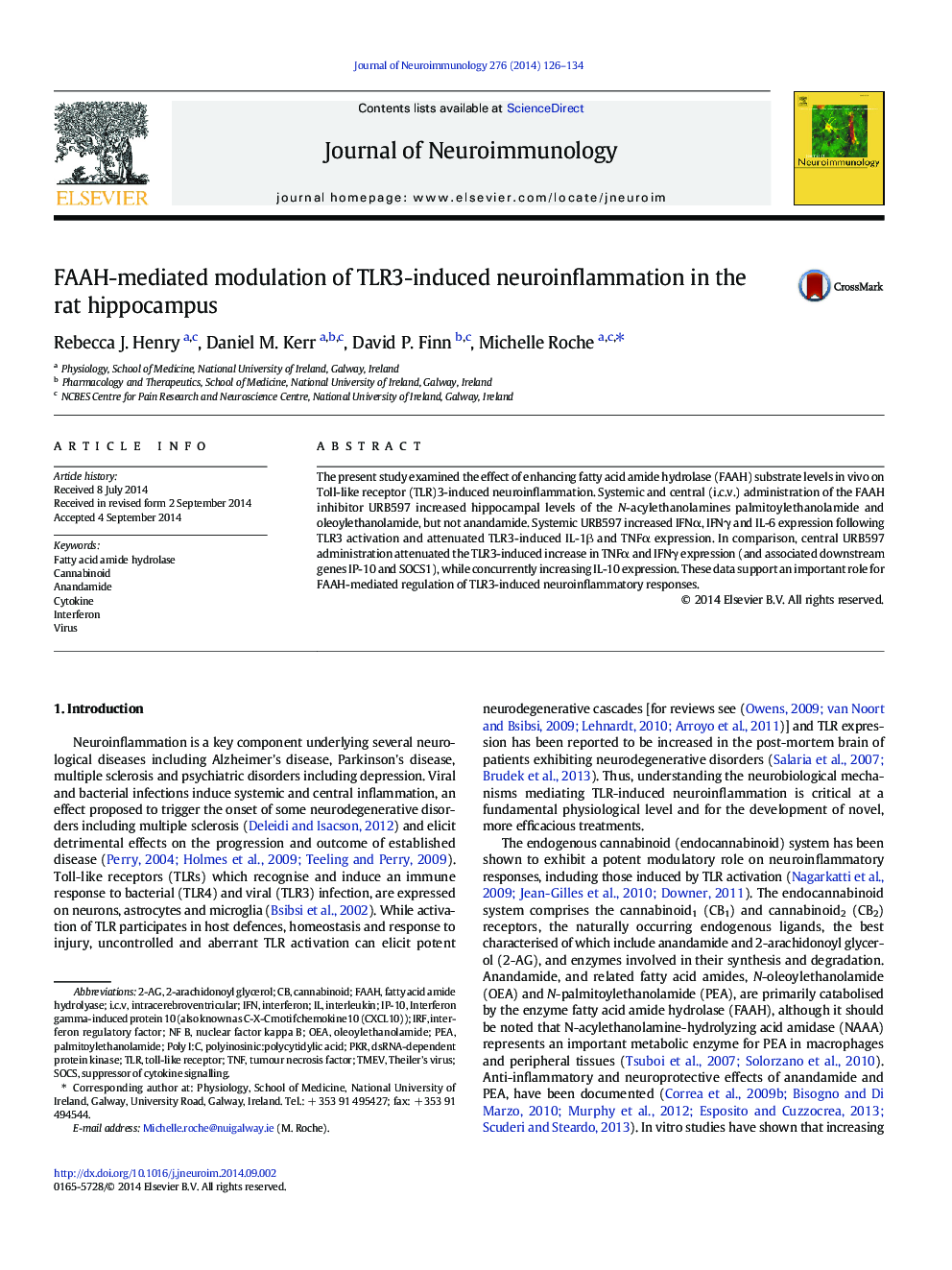| Article ID | Journal | Published Year | Pages | File Type |
|---|---|---|---|---|
| 3063980 | Journal of Neuroimmunology | 2014 | 9 Pages |
•Systemic and central FAAH inhibition increases hippocampal OEA and PEA levels.•Systemic URB597 alters TLR3-induced hippocampal interferon and cytokine expression.•Central URB597 attenuates TLR3-induced hippocampal inflammatory gene expression.•Central FAAH substrates modulate TLR3-induced neuroinflammatory responses.
The present study examined the effect of enhancing fatty acid amide hydrolase (FAAH) substrate levels in vivo on Toll-like receptor (TLR)3-induced neuroinflammation. Systemic and central (i.c.v.) administration of the FAAH inhibitor URB597 increased hippocampal levels of the N-acylethanolamines palmitoylethanolamide and oleoylethanolamide, but not anandamide. Systemic URB597 increased IFNα, IFNγ and IL-6 expression following TLR3 activation and attenuated TLR3-induced IL-1β and TNFα expression. In comparison, central URB597 administration attenuated the TLR3-induced increase in TNFα and IFNγ expression (and associated downstream genes IP-10 and SOCS1), while concurrently increasing IL-10 expression. These data support an important role for FAAH-mediated regulation of TLR3-induced neuroinflammatory responses.
